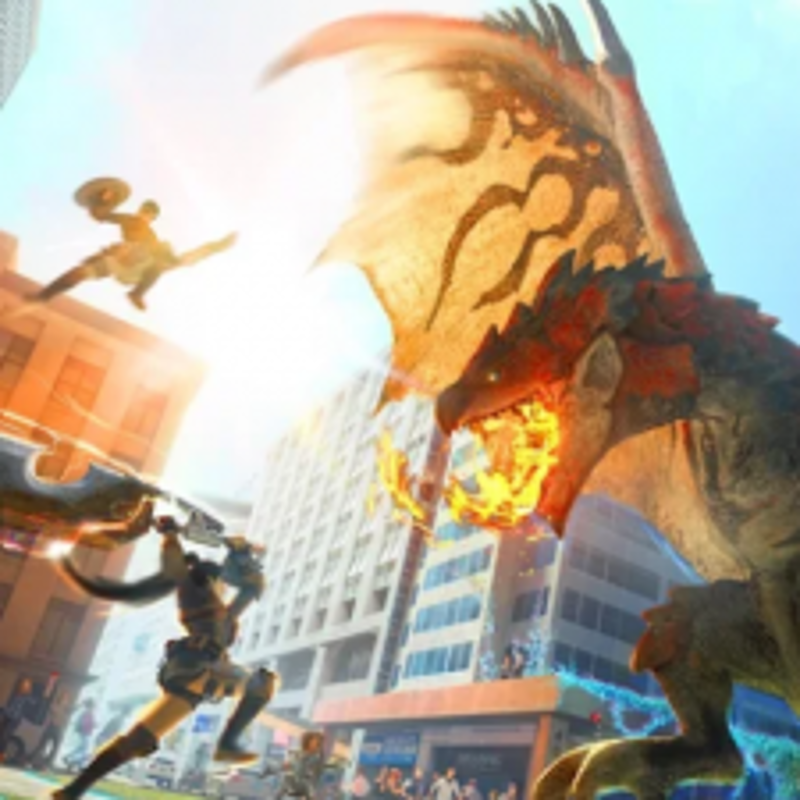Monster Hunter Now, Niantic's latest release, has taken the gaming world by storm. With a staggering $14 million in revenue within its first month, this game is already on track to become Niantic's third biggest hit. Let's delve into the factors contributing to its success and what sets it apart from other Niantic titles.
The Massive Success of Monster Hunter Now
Discover how Monster Hunter Now has taken the gaming world by storm, becoming Niantic's fourth largest launch and generating $14 million in its first month.
Niantic's latest release, Monster Hunter Now, has achieved remarkable success within a short span of time. With over five million downloads in its first week, it has become Niantic's fourth largest launch to date. Additionally, the game has generated an impressive $14 million in revenue during its first month, positioning it as a major contender in the gaming industry.
The popularity of Monster Hunter Now can be attributed to its captivating gameplay and engaging features. By allowing players to immerse themselves in the world of monster hunting, the game offers a unique and thrilling experience. Its success highlights the strong appeal of location-based gaming and showcases Niantic's expertise in creating immersive virtual worlds.
The Winning Formula: Similarities to Pokemon Go
Explore how Monster Hunter Now's similarities to Pokemon Go contribute to its success and player engagement.
One of the key factors behind the success of Monster Hunter Now lies in its similarities to Pokemon Go, Niantic's flagship game. Both games share a core gameplay loop centered around exploring real-world locations and capturing creatures. This familiarity has resonated with players, especially those who enjoyed the Pokemon Go experience.
Furthermore, the Monster Hunter franchise itself has a massive following, with over 85 million sales across multiple titles. Leveraging the existing fanbase and incorporating familiar elements from Pokemon Go, Niantic has successfully created a game that appeals to both Monster Hunter enthusiasts and fans of location-based gaming.
Targeting the Japanese Market
Learn how Monster Hunter Now strategically caters to the Japanese market, resulting in a significant portion of its revenue coming from Japan.
With around 70% of its revenue originating from Japan, Monster Hunter Now was clearly designed with the Japanese market in mind. Niantic's attention to detail is evident in the game's avatar selection, which features characters with Asian features to resonate with Japanese users.
Moreover, the game's lighter RPG progression systems align with the preferences of the Japanese market. While some experts suggest that Niantic could have incorporated more complexity to cater specifically to Japanese players, the current implementation strikes a balance that appeals to a global player base.
The success of Monster Hunter Now in Japan can also be attributed to the game's recent in-game event at the Tokyo Game Show. This event resulted in a significant revenue spike, showcasing the enthusiasm of Japanese players and their support for the game.
Building on Previous Failures
Discover how Niantic learned from past failures to create a successful game with Monster Hunter Now.
Niantic has faced challenges in replicating the success of Pokemon Go with its subsequent releases. Games like Harry Potter: Wizards Unite and NBA All-World did not achieve the same level of popularity and were eventually discontinued. The cancellation of the AR title Marvel: World of Heroes further highlights the struggles Niantic faced in expanding its successful formula to other franchises.
However, the development of Monster Hunter Now shows that Niantic has learned from these past failures. By focusing on a franchise that aligns well with their location-based gameplay mechanics, Niantic has successfully created a game that captures the attention of players and demonstrates their ability to adapt and learn from previous experiences.
Conclusion
Monster Hunter Now has proven to be a massive success for Niantic, generating $14 million in its first month and becoming their fourth highest-grossing game. Its similarities to Pokemon Go, strategic targeting of the Japanese market, and lessons learned from previous failures have contributed to its popularity. With its captivating gameplay and engaging features, Monster Hunter Now showcases Niantic's ability to create immersive virtual worlds and deliver enjoyable gaming experiences.
FQA :
What sets Monster Hunter Now apart from other Niantic games?
Monster Hunter Now stands out due to its similarities to Pokemon Go and the strategic targeting of the Japanese market. Its engaging gameplay and immersive features make it a unique and enjoyable experience for players.
Why has Monster Hunter Now been so successful?
The success of Monster Hunter Now can be attributed to its captivating gameplay, the existing fanbase of the Monster Hunter franchise, and Niantic's expertise in creating location-based gaming experiences. Additionally, the game's strategic targeting of the Japanese market has significantly contributed to its revenue.
What can we learn from Niantic's previous failures?
Niantic's previous failures, such as Harry Potter: Wizards Unite and NBA All-World, highlight the importance of aligning the core gameplay loop with the location-based format. Monster Hunter Now's success demonstrates Niantic's ability to learn from past experiences and create a game that resonates with players.

